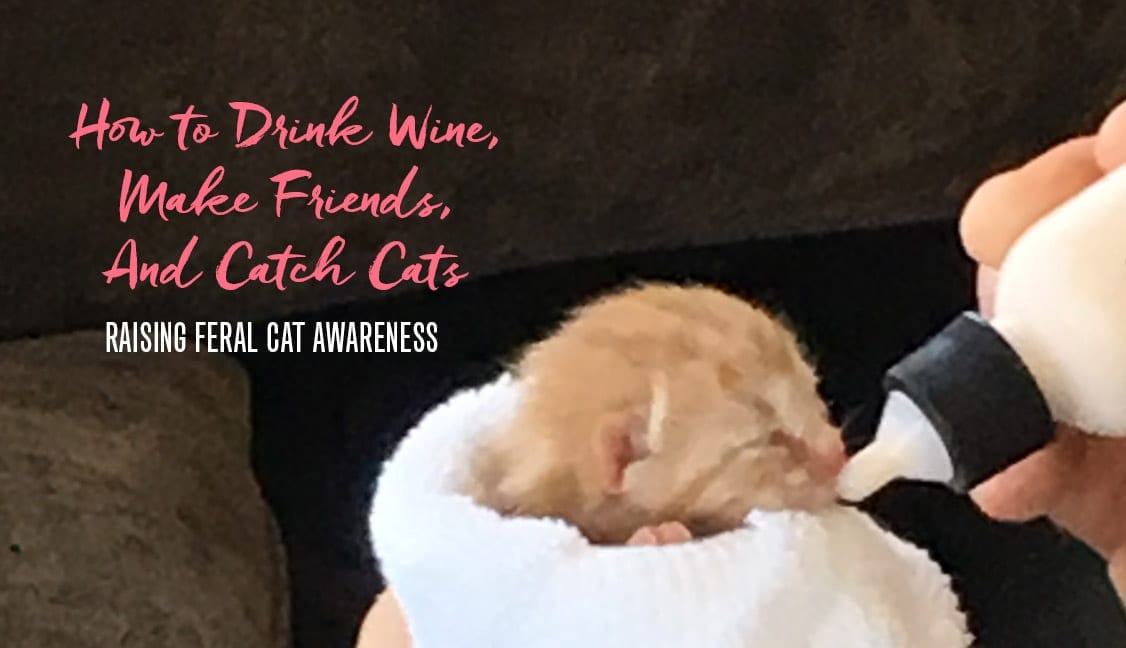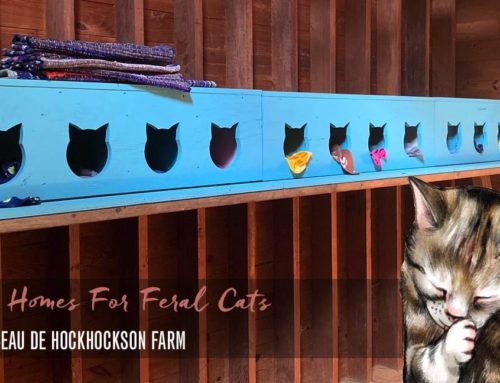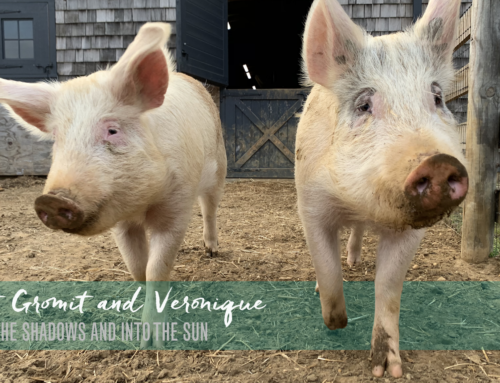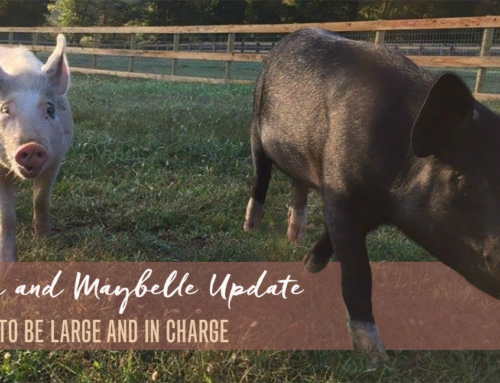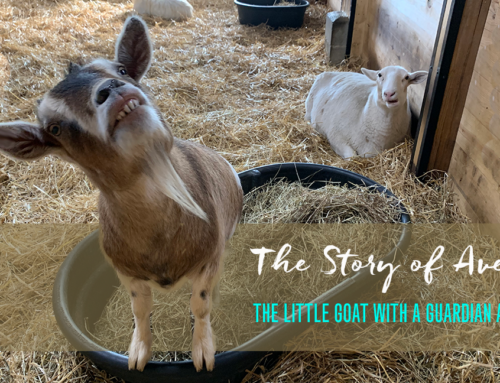Luckily for all, when we purchased The Hey Friend Foundation we got more than we paid for. Their names are Dr. White Pants, Missy Gray, Greg, Tetley, Ernie, Queen Frostine, Steely Dan, Smith, Fleetwood Mac, Kaleidoscope, Marquerite, Malcolm, Mama Aspen, Helen, Hall and Oates.
While happy to make the acquaintance of this feral family of felines but we knew kitten season was approaching. If we didn’t get on top of things quickly our cat population was about to get a whole lot bigger. I reached out to Jane Hoffman, President of the Mayor’s Alliance for NYC’s Animals.
Jane put us in touch with Kathleen O’Malley of New York Feral Cat Initiative. We also enlisted the help of Laurie Tietjen of Mini Horse Heroes who put us in touch with Associated Humane and volunteers from Fur Friends In Need with Nancy Flint. Together we embarked on a Trap-Neuter-Return program.
Spaying and neutering feral cats is important for decreasing the spread of disease, eliminating behavioral problems and reducing overpopulation in neighborhoods. Trap-Neuter-Return programs are the most humane and effective ways of controlling these problems. I knew I was in for some hard work but I didn’t know how much fun I was about to have.
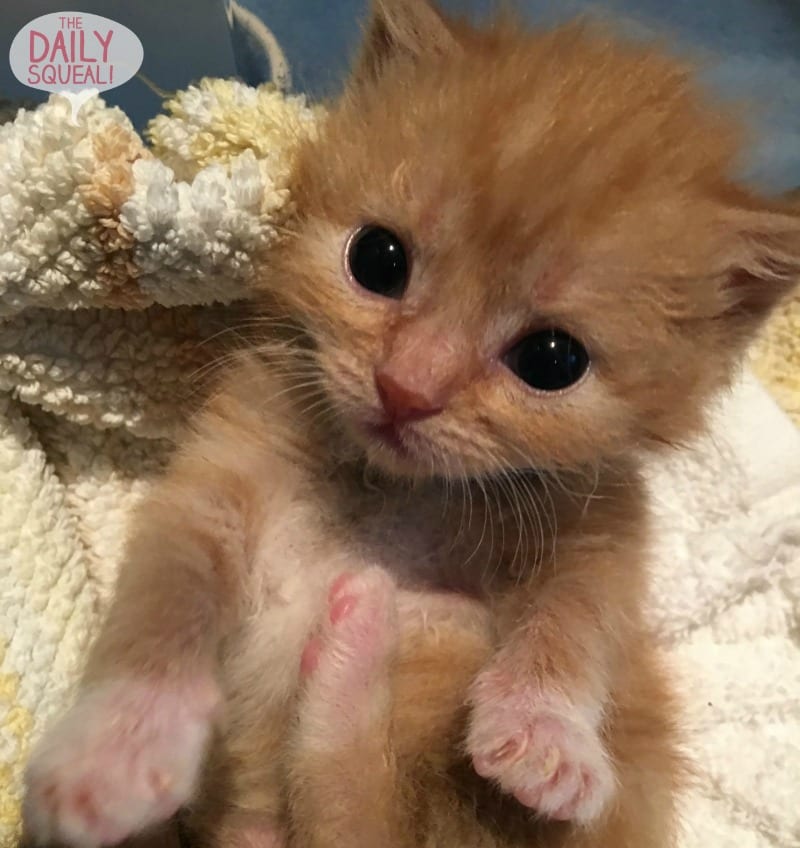
THE SET-UP
The New York City Mayor’s Alliance helped us find wire cage traps about the size of two bread baskets. We set them up around the property with the trap mechanism disengaged. We used zip-ties to make sure the trap could not close accidentally trapping a cat before we were ready to alter his or her lady or man parts. For the next week every time a kitty would wander into these traps they’d find delicious meals waiting for them without getting trapped. They started to love their traps and some would even sleep in them. During this week we prepared a barn that would act as our post-surgery recovery room where the cats could be monitored, kept off the ground, warm and fed. We also used this time to further educate ourselves about the do’s and don’ts of TNR.
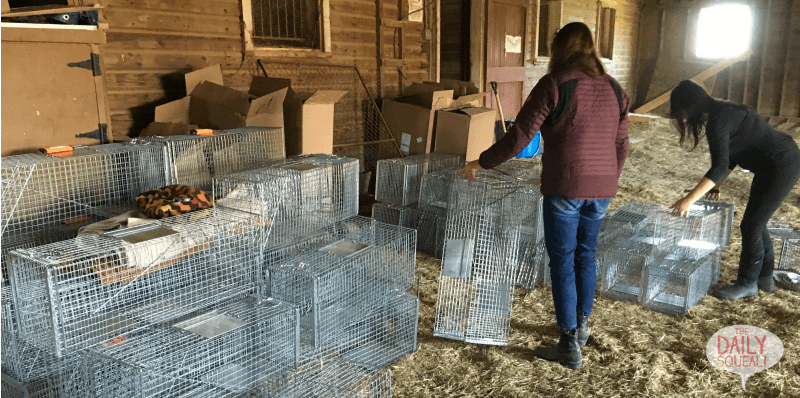
THE DAY BEFORE TRAPPING
We needed our unsuspecting colony to be hungry so food was not given the day before actual trapping was to begin. It was now time to unhinge and activate the traps. On the day of the trapping we upped the stakes by serving an even more delectable meal inside the traps than had been served the previous days.
The minute the cats stepped inside the cage their weight triggered the trap to close. We heard the snap and ran over with blankets in hand, ready to cover the traps to help calm the cats inside and to ensure that no other cats nearby were aware of what was happening.
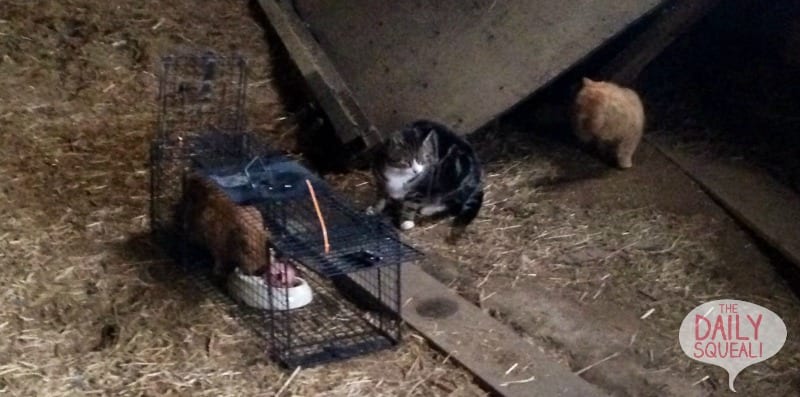
We started early in the morning and waited patiently all day until the sun went down. This is where the wine and friends came into the plan. We trapped 26 cats that day and held them in our warm, safe barn over night.
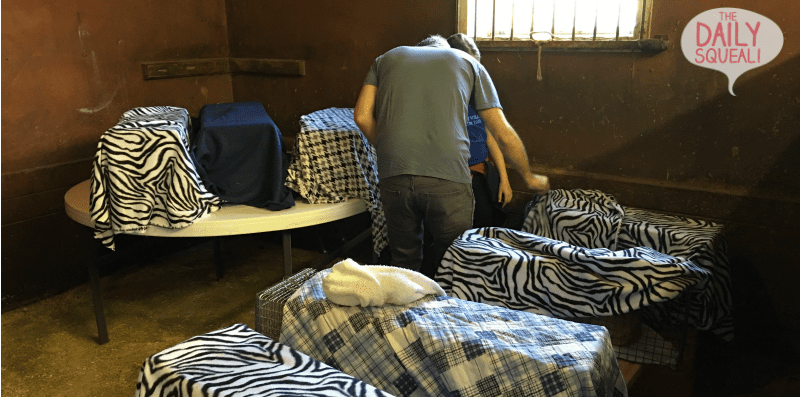
THE SPAY AND NEUTER
Associated Humane arrived with veterinarians and a surgery suite all housed inside a giant truck.
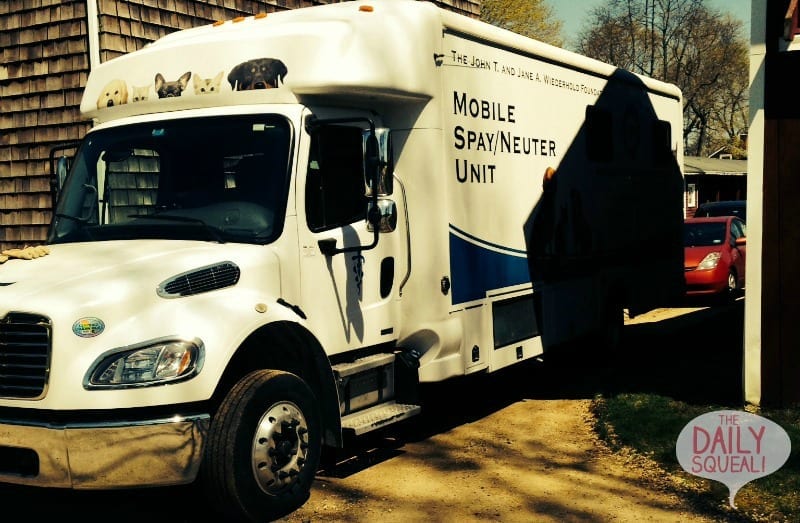
Each cat was photographed and given a number and a name. When it was time, the cats were anesthetized, sexed and given a small procedure to remove a 1/4” off the top of their left ear. Ear tipping is the universal sign of an altered feral cat. It is necessary to ensure that going forward, we can identify any new cat in the population that hasn’t been altered and find a way to perform TNR to keep the population down. Blood was drawn and vaccines were administered and then it was off to recovery.
BACK TO WILD
After their surgeries, the cats were kept safe and warm while they recovered overnight. When morning came, we lined up their traps and got them ready for their return. We had noted the location where each cat was trapped so we knew exactly where they would need to be returned. When everyone was in place, we released the hinges and the newly altered cats were free to go.
NEW FRIENDS
My family and I had a wonderful experience working on this project. We met so many kind-hearted, fun and generous people. Laurie Tietjen from Mini Horse Heroes brought Hamlet to graze. One of our volunteers was nursing a baby squirrel while she waited for other cats to be trapped. There was a recently rescued pit bull puppy with a very pink belly that needed to be rubbed.


Now these are not the kind of people you want to hang around if you’re not looking to bring more animals into your house. Before I knew it I had agreed to bottle-feed, all through the day and ALL through night, another group of kittens that had been abandoned. More friends! More wine!

SOME TIPS FOR A SUCCESSFUL TNR:
Local humane societies, shelters and rescue groups can provide humane traps for TNR and can refer you to local nonprofits with volunteers who will help through the process.
Humane traps can be purchased online from websites such as: livetraps.com, havahart.com and trucatchtraps.com.
Be aware of where you set up traps. Don’t trap a cat out in the rain or in the heat without protection. Cats are vulnerable in the traps and its your responsibility to make them feel safe and comfortable, stopping them from getting wet or suffering from heatstroke.
Be sure to take a quick peek under the blanket to confirm that you trapped the right animal and not another wildlife creature! Keep the traps covered with blankets. The cats will remain calm as long as they’re covered.
Laying down newspaper or absorbent material in your holding center and post-surgery space is useful for catching food residue and urine. Plastic covering is not useful for absorbing liquids!
Cats don’t like walking on wire surfaces. Lining material inside the traps will help the cats feel comfortable and stop their feet from going through the wire bottom when you pick up the trap.
Use a paper bowl to feed the cats and place the bowl at the back of the trap. There is a fork like mechanism that slides into the side of the trap which can keep the cat from reaching your hand while you’re delivering the meal.
Feeding the cats for a week in advance in zip-tied disengaged traps teaches the cats to love the traps. Be sure that all traps are properly secured open. You don’t want to be responsible for accidentally trapping a cat before its time and not realizing that they are trapped.
Do not stick your fingers inside the traps or try to open them. Feral cats are often not socialized and may already carry diseases. They may scratch and bite you if they’re scared.
Unless the cats’ lives are in danger, be sure to return them to the original area where they were captured. Cats form strong bonds and are territorial. Relocating is very stressful for them and they may not survive.

